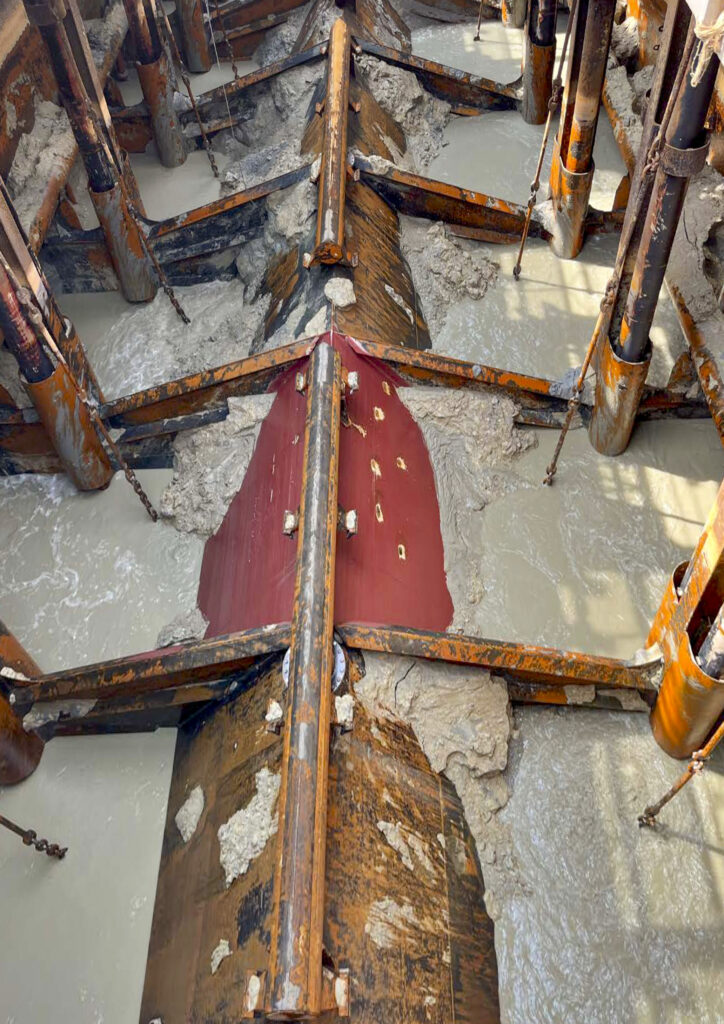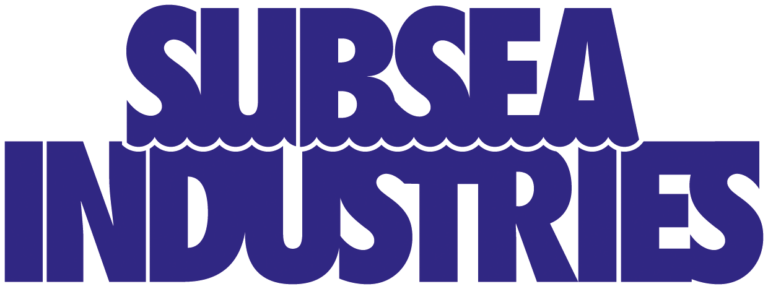Testing of Ecoshield on the Dutra Trailing Suction Hopper Dredger Stuyvesant shows that the coating promises to be a viable solution for protecting the hopper of a dredger.
Dutra and the Stuyvesant
The Dutra Group is a leading US heavy civil and marine contractor headquartered in San Rafael, California. Its three divisions, Dutra Dredging, Construction, and Materials, work together to strengthen the US infrastructure through sustainable dredging and marine construction. The TSHD Stuyvesant plays a major role in the Group’s ability to dredge long and wide waterways.
The Stuyvesant is a 113 meter, 8,432 GRT dredger, US-built by Avondale Shipyard in 1981 and converted in 1994. The dredger can operate in both tropical and arctic conditions, has deep dredging capabilities and is suitable for working in coastal waters. The hopper has a capacity of 8,520 cubic meters and the vertical hopper walls guarantee fast and effective dumping of sticky materials.
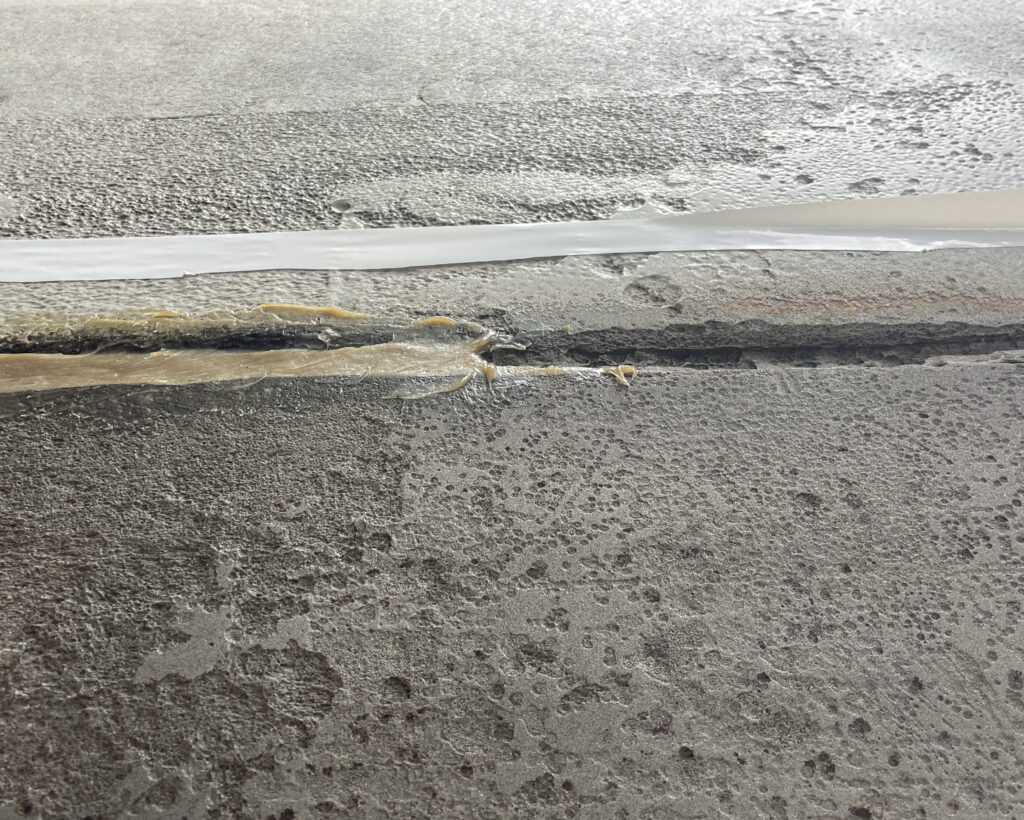
Abrasion, wear and Ecoshield
Dredgers generally experience high wear as a result of their normal activities. In the case of the Stuyvesant, this occurs mainly on the flat bottom and inside the hopper.
In general, the hopper of a dredger is not coated, as the usual protective coatings will not be able to withstand the abrasion of the constant flow of sand and dredged material and will simply turn tail and vanish, leaving the steel to face the elements unprotected. Then, when the dredger arrives for its routine drydocking, it is a matter of estimating how much steel has been lost and repairing or replacing it. The idea of applying a highly abrasion-resistant coating was therefore novel.
To try to mitigate some of the wear and reduce the need for steel replacement and repair, in August 2022 Dutra Fleet Manager Iain Searle decided to run tests of Ecoshield on parts of the Stuyvesant that were particularly prone to abrasion damage. A test patch of Ecoshield was applied to the bottom and another test patch inside the hopper.
Ecoshield has a long, proven track record as the most durable protective coating for rudders and running gear available. But there has not been such a long track record of protecting the inside of dredger hoppers. This is a new application for Ecoshield, and the results so far are very promising.
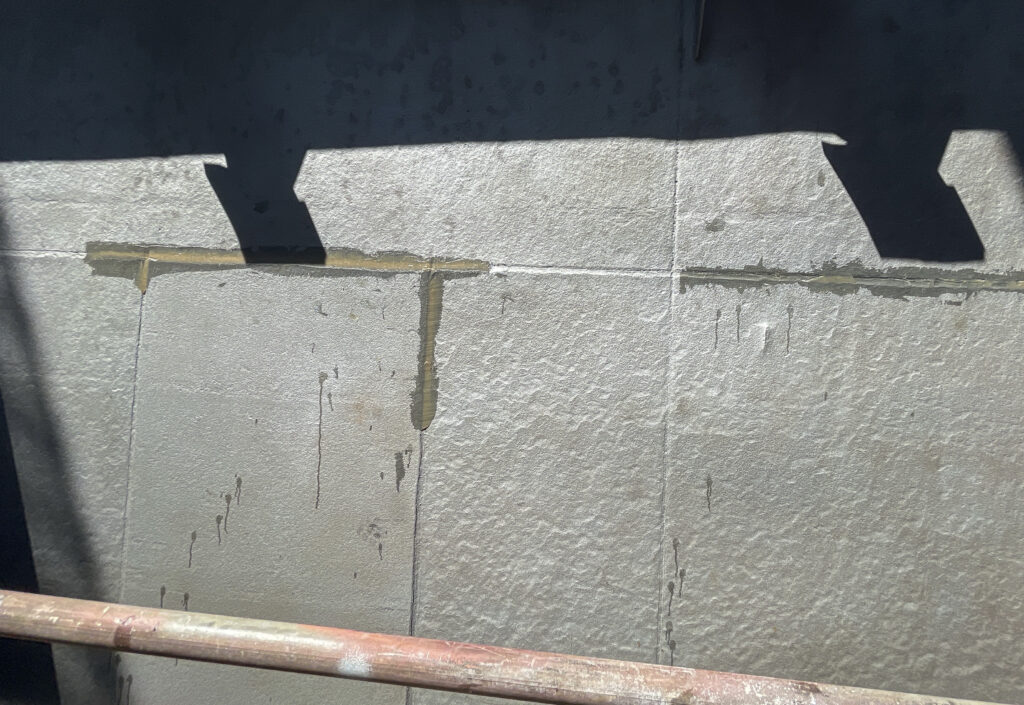
Hopper preparation and Ecoshield application
A section of the interior slope of hoppers port and starboard were chosen for the test. Preparation of the area to be coated consisted of grit blasting to SA 2.5 and a roughness of 124 µm average (75µm minimum roughness is required). Pitted areas and welds were then repaired with Ecofix, a sister product to Ecoshield. Ecofix is a compatible filler for pitting and surface damage which is often used prior to the application of Ecoshield.
Two coats of Ecoshield were then applied, first coat white, second coat red. Ecoshield can be applied just one hour after Ecofix has been used to repair the damage. The second coat of Ecoshield can be sprayed on three hours after the first coat, and there is no maximum overcoat time. DFT for the hopper test patch averaged 1477 µm with a minimum of 920 µm and a maximum of 1994 µm. The required DFT is at least 1000 µm.
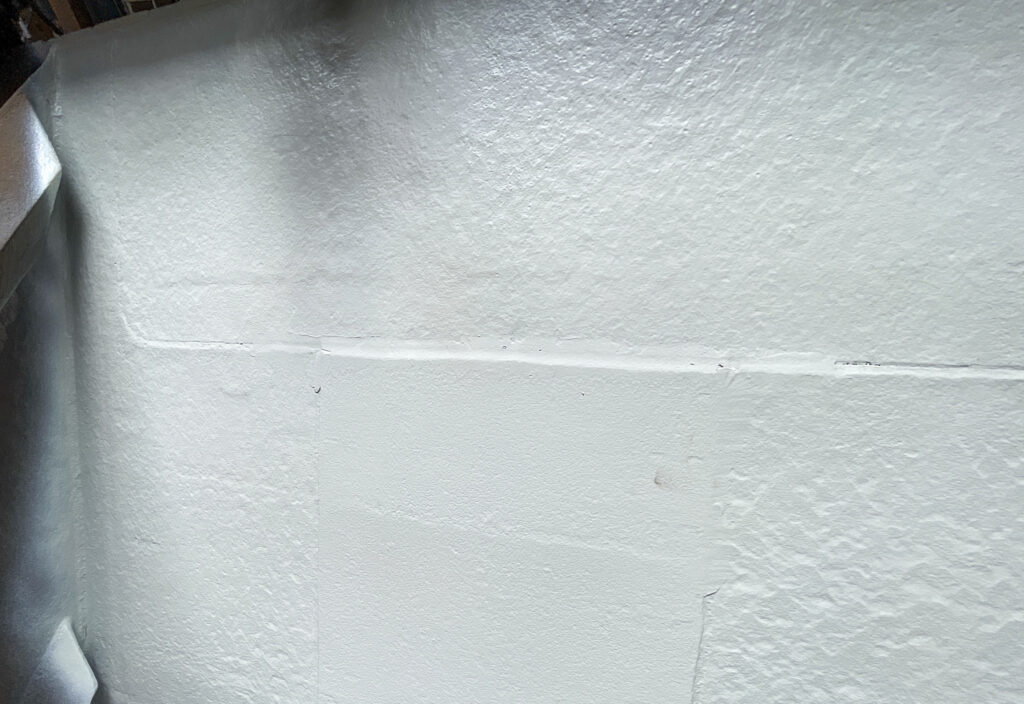

Ten months later
Inspection of the hopper was carried out in mid-June 2023 which is 10 months after application. The dredger had been in normal use during that period. The photo below is of the inside of the hopper. The Ecoshield test patch is the red section.
The photo shows the state of the coating after 10 months. Some mechanical damage to the coating is visible on one side, probably caused by stones or a metal chain or tube. It is important to note that such damage to the coating can very easily be repaired without loss of quality of the coating. In other words, repaired spots are as strong as the original layers. Overall, the coating is all in place and looking surprisingly good, considering the constant barrage of dredged material to which it is subjected. Clearly since the coating is intact, no damage to the steel has occurred and there has been no erosion or corrosion.
Dutra Fleet Manager Iain Searle was very pleased with the results. “To be honest,” he said, “I was expecting it to be gone in a few weeks, so I am surprised it is holding up at all.”
Based on the success of the initial testing, Dutra is now considering applying our coatings to the entire hopper at the next drydocking.
